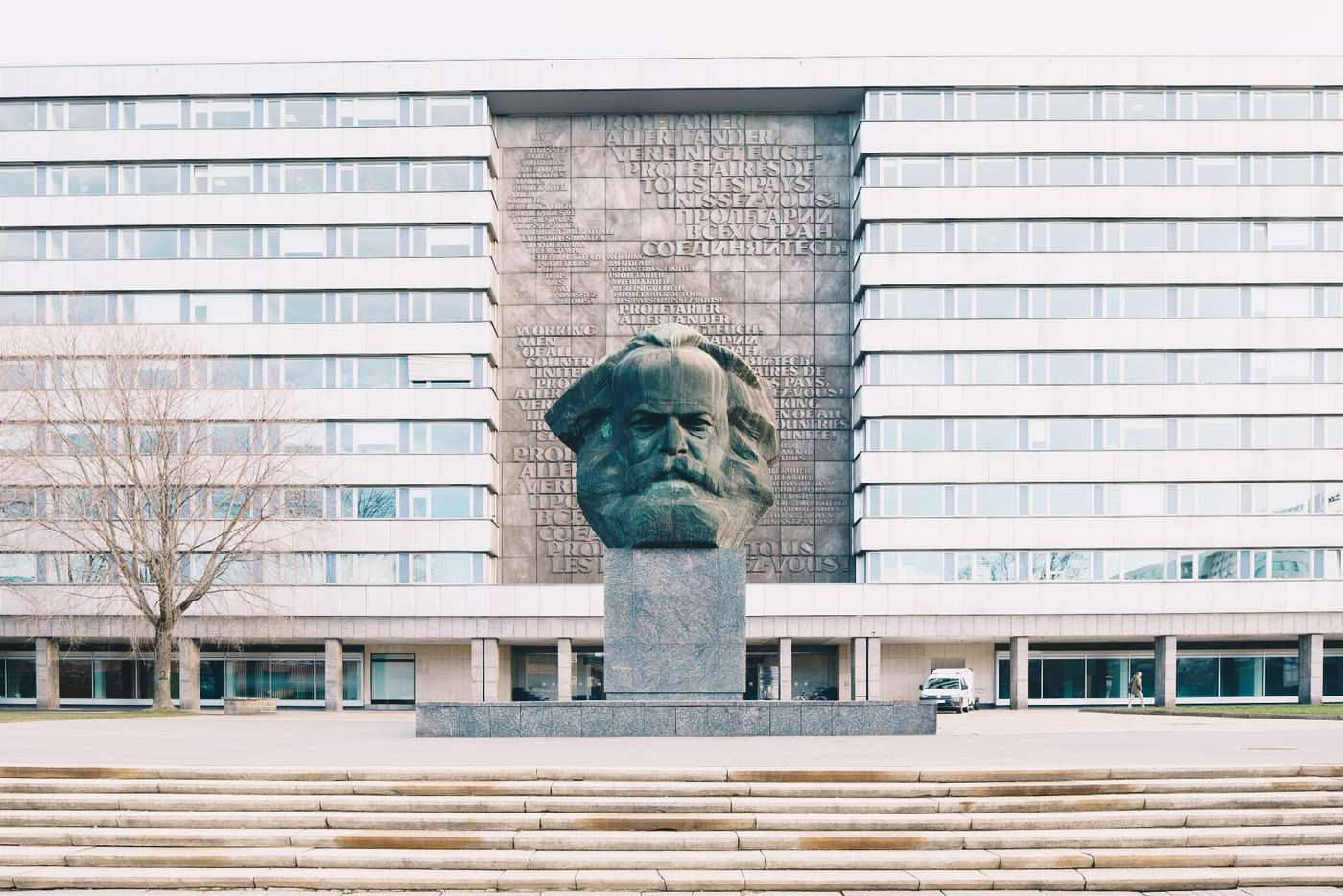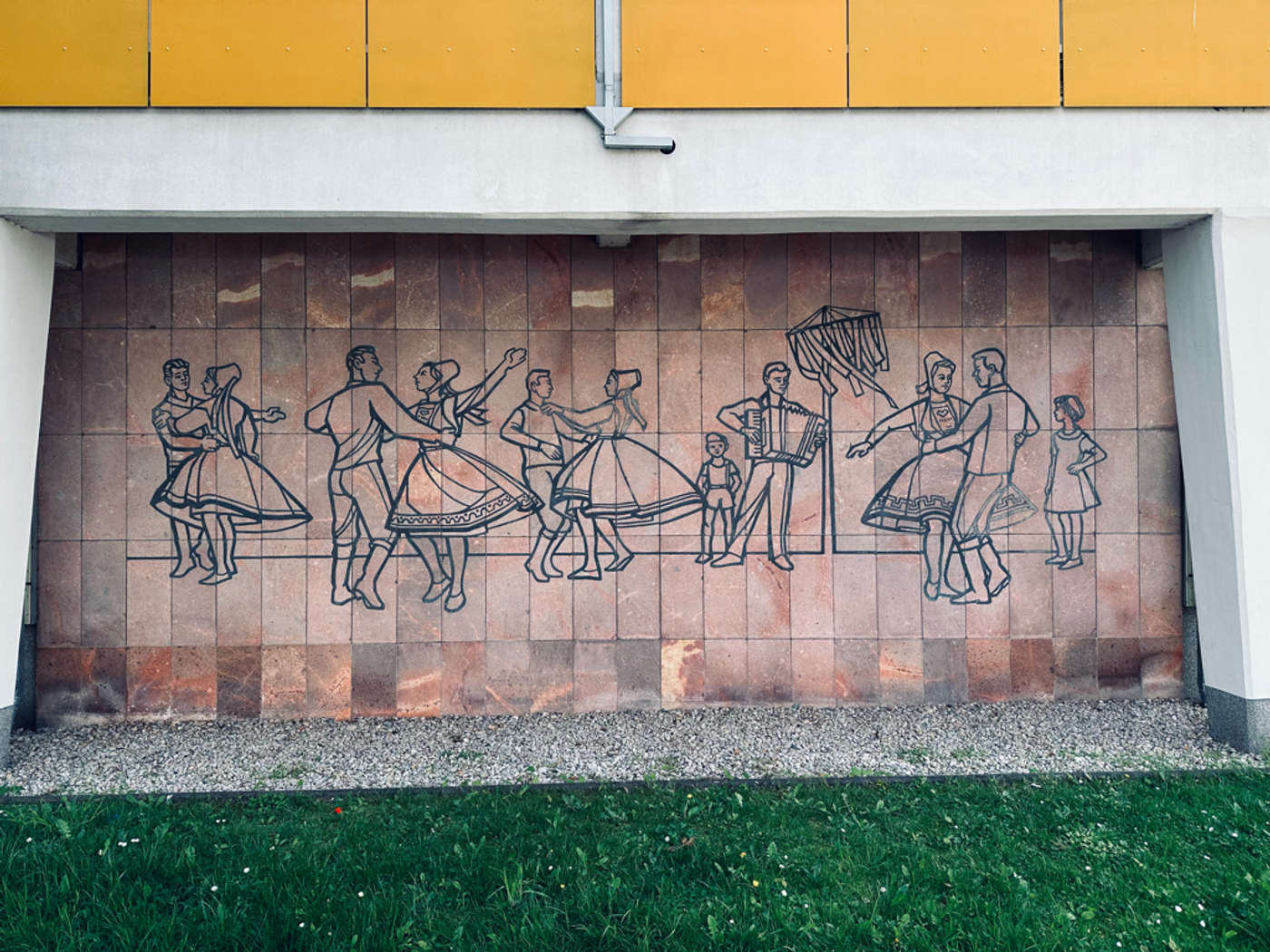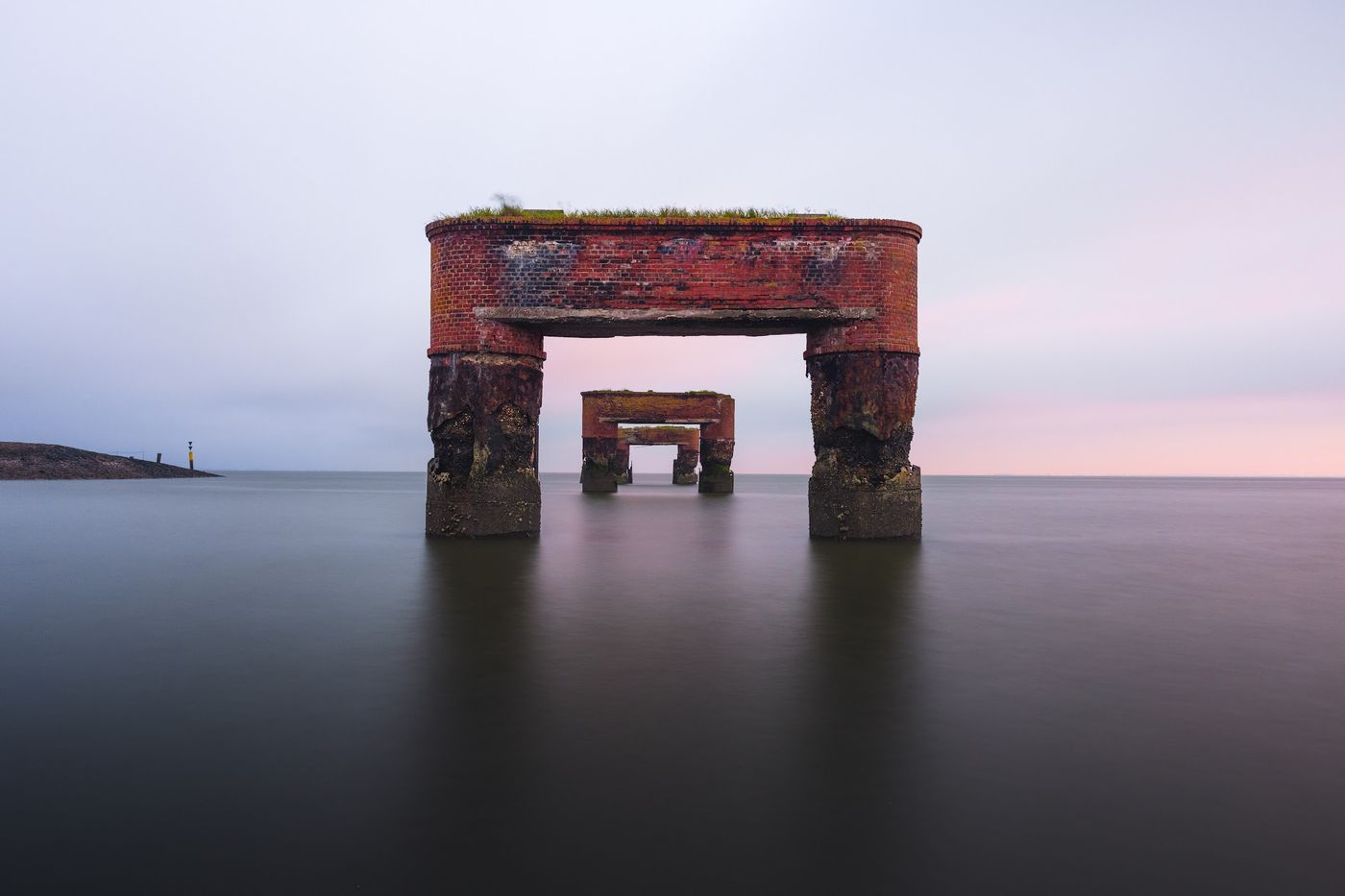
Ulm
The quirky hotel on the riverbank
The Leaning House in Ulm's fishing district is a sight not to be missed. With its unique architecture and history, it is a real eye-catcher.
The half-timbered house is not only crooked, but also the crookedest hotel in the world! Even though it looks impressive from the outside, it is also worth taking a look inside. The house has a long history and has been an integral part of the fishermen's quarter for 500 years. Although everything is crooked, the house is still standing and habitable.

Mannheim
High up with panoramic views
The best view over Mannheim is from the more than 200-metre-high telecommunications tower. With its central location between the banks of the Neckar and Luisenpark, it offers a breathtaking view over the Rhine plain and as far as the Odenwald. Enjoy the view while dining at the revolving Skyline restaurant, located just above the observation deck! The restaurant rotates completely on its own axis once in an hour. Along with Berlin, Munich and Düsseldorf, the Mannheim telecommunications tower is one of the few of its kind where you can eat.
TIP: Mannheim and the region are particularly beautiful at sunset. The best way to enjoy the view is with a romantic candlelight dinner in the revolving restaurant.

Görlitz
Fantastic panoramic view
Perhaps the most beautiful tower in the most beautiful place in the old town, the Untermarkt.
Visitors can discover the town hall tower on a one-hour guided tour, as there is a lot to learn in the tower, which was first mentioned in 1378: from the pillory and the executioner to the moon phase clock and the everyday life of the tower guard. After climbing 191 steps, the ascent is rewarded with a fantastic view of the roofs of Görlitz's old town from a height of around 60 meters.
According to an old legend, a former tower watchman was walled into the town hall tower while still alive because he had slept instead of raising the alarm during a town fire. Today, his head is emblazoned in the center of the clock face. Every minute he opens his eyes and mouth in horror. The orange pupils reflect the fire of that day.

Chemnitz
Special feature worth seeing
The question is justified: Which one is which? Quite simply: the old one looks newer. The New Town Hall was spared during the air raids in 1945, but the Old Town Hall and the Jakobikirche behind it were not. The treasures inside the double town hall, such as the famous mural "Work - Prosperity - Beauty" by Max Klinger or the painting "The Weighing Up" by Neo Rauch, can be explored on a tour of the town hall and tower, as can the High Tower.
In addition, the town halls each have a carillon, which can be heard at certain times in the city center. The tower carillon in Chemnitz's New Town Hall, also known as the Carillon, is played by hand with its 48 bells. The carillon can be heard on Wednesdays and Saturdays from 10 am to 10:30 am and on Fridays from 4:30 pm to 5 pm. In the Old Town Hall, on the other hand, there is a figurative carillon with six bronze figures accompanied by 25 bells. The figures symbolize stages in Chemnitz's history and rotate daily at 11 am, 4 pm and 7 pm to the melody of the bells.

Chemnitz
Head, or simply "Nischel".
He always looks a little grim and has seen a lot in the meantime. The Nischl (the Saxon word for "head") is the city's landmark. Between 1971 and 1989, it was mainly the backdrop for socialist celebrations, but today the 40-tonne colossus is Chemnitz's most popular photo motif, a meeting point for skaters and probably the heaviest decoration for concerts at the Kopp.

Görlitz
On foot to the neighboring country over the Old Town Bridge
Already since 1298 there was a bridge here. Originally made of wood, it had to be renewed again and again due to loads from the trade caravans, fires, floods and the effects of war.
In 1906/1907 a stone bridge was built. In addition, the old Jacob Böhme House, a cloth factory and the Holy Spirit Church were demolished. On May 7, 1945, soldiers of the Wehrmacht blew up the bridge. For almost half a century the river remained without crossing at this place. On October 20, 2004, today's Old Town Bridge was officially opened. Since then, the pedestrian bridge has reconnected the two parts of the European City of Görlitz/Zgorzelec at the historic site and symbolizes the growing together of the two cities.

Göttingen
A true masterpiece
Hundreds of people pass through Weender Straße every day - they all have one thing in common: they pass house number 62, diagonally opposite the junction with Mühlenstraße. And if you are already here, it is especially worthwhile to lift your eyes once, because the - 1549 built - Schrödersche house is a true masterpiece of Renaissance half-timbered construction. Above the windows of the clothing stores "Blutsgeschwister" and "Calzedonia", on the second floor, a true treasure chest of woodcarving opens up.

Göttingen
Capture the Moment: Paulinerstrasse in Göttingen as a photo hotspot
The perfect photo spot in Göttingen? The Paulinerstraße! With its charming atmosphere and historic half-timbered houses, it is a true paradise for all photo enthusiasts. The colorful facades provide a great backdrop for colorful portraits.
So grab your camera and explore Paulinerstraße in Göttingen - the perfect place for an Insta-worthy photo shoot.

Leipzig
Uniriese. Wisdom tooth. Panorama Tower.
The highest office building and landmark of the city has many names! But no matter what you call it, from here you can enjoy a breathtaking panoramic view over the city. At 142.5 meters, it is the second-highest skyscraper in the new German states and, in good weather, even offers a view far beyond the city limits.
Best of all, you can expect not only a fantastic view of the Messestadt skyline, but also the Panorama Tower "Plate of Art" restaurant with delicious specialties. Admission to the viewing platform is €5.00 per person.

Königsbrunn
Mercateum - the world's largest globe
The Mercateum in Königsbrunn is an impressive globe - the world's largest - with an equally interesting interior! An exhibition provides information on long-distance and maritime trade, i.e. the trade in goods to India and other countries in Asia, Africa, Central and South America.
The globe itself is modelled on a historical cartography.
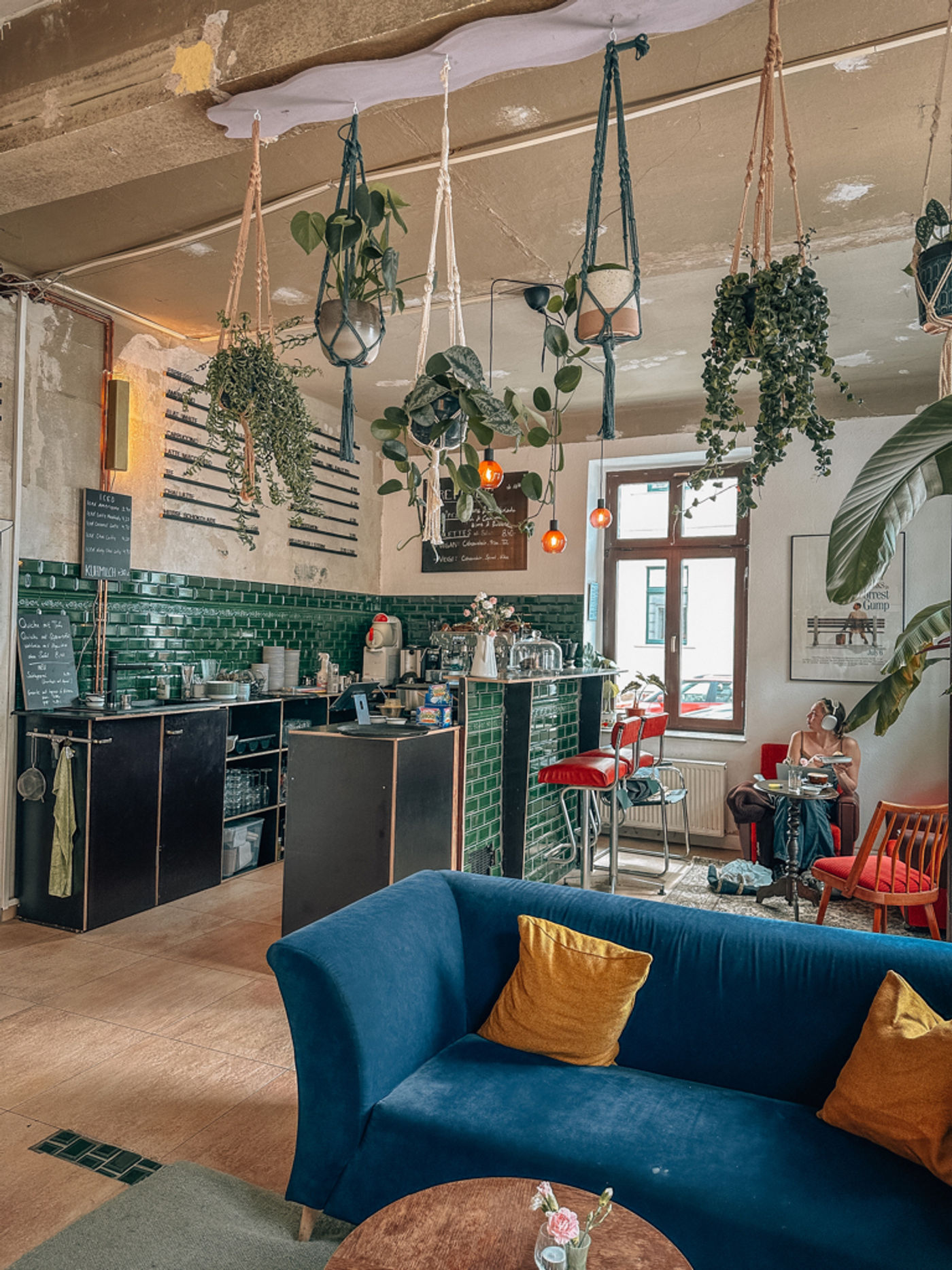
Leipzig
French coffee culture in vintage design
#HiddenLeipzig At Café Pfusch, sustainability meets French specialties and vintage flair. While the interior with its furniture from the 70s creates a cozy and alternative atmosphere, the assortment and vision of the café go in the complete opposite direction: There are fine French specialties such as cakes, tartlets and homemade croissants - all in vegan. In addition, the coffee here is offered with organic cow's milk and oat milk. There is also an outdoor seating area. In short: Really nice here! 🪴

Ulm
The highest in the world
The Ulm Minster or Ulm Cathedral is simply impossible to miss. Of course, at 161.5 meters, it has the tallest church tower in the world, even taller than Cologne Cathedral. This building is really impressive, so be sure to take a look inside - admission is free. Construction began in 1347, but it was not completed until 1890. Since then, the interior can accommodate up to 20,000 people. Last but not least, Ulm Minster itself miraculously remained undamaged during the war.

Chemnitz
Mysterious vaults and Gründerzeit romance
Wander through historic streets lined with magnificent Gründerzeit facades and dive underground into a labyrinth of old vaulted cellars that once served as huge beer cellars. Above ground, cozy cafés and boutiques beckon, while underground guided tours take you through the extensive network of hidden passageways, whose history dates back to the 16th century.
Kaßberg is one of the largest contiguous Art Nouveau and Wilhelminian style districts in Europe.

Ulm
Experience Baroque splendour
The former Benedictine monastery is famous above all for its baroque library hall with its rich decoration of frescoes and sculptures. But the wonderful monastery church of St. Martin is also of great importance to this day. From the outside, the building appears monumental and austere due to the façade, which was never completed. The bright church interior with the grandiose ceiling frescoes stands at the transition from late Baroque to early Classicism. A special visitor highlight is the ›Museum im Konventbau‹. It focuses on the life of the subjects in the monastic state. It was they who, with their services and contributions, ensured that Wiblingen was not only a place of prayer, but also a flourishing business.
Our tip: with the UlmCard you get free admission to the museum and the library hall.

Erfurt
A real feast for the eyes
The Krämerbrücke is undoubtedly a must-see for every visitor to this charming city. One of the landmarks par excellence and one of the few completely built-up and inhabited bridges in Europe, it is a real feast for the eyes. Only the Ponte Vecchio in Florence can rival it in this respect, but the Krämerbrücke has its own unique charm.
A walk across the bridge immerses you in a lively atmosphere. Small, individual stores, art galleries and cafés are lined up along the street. Here you will not only find typical tourist knick-knacks, but also truly beautiful and unique things. From handmade arts and crafts to local Thuringian specialties and some of the best chocolate creations north of the equator at Goldhelm Schokolade, there is plenty to discover here.
Don't miss the opportunity to sit behind the Krämerbrücke bridge on the banks of the Gera. This is pure Erfurt feeling and will give you unforgettable moments of relaxation.

Butjadingen
Panoramic view of the North Sea
On an impressive 45-metre-high lighthouse, which was decommissioned in 2012, two viewing platforms can be explored at a height of 18.40 and 34.50 meters. From there, you can enjoy breathtaking views of the Lower Saxony Wadden Sea National Park, the picturesque landscape of Butjadingen and the port city of Wilhelmshaven with the Jade-Weser-Port.
At weekends, visitors can enjoy the view from 15:00 to 17:00. Individual viewing appointments are also available for groups of 10 or more.

Hemer
Panoramic view over the green Sauerland
An imposing landmark of Hemer, which is climbed over 200 steps. On the way up, there are always breathtaking views of the Sauerland. Once at the top, the tower rewards with a magnificent view of the city and the surrounding nature. In clear weather, you can even see as far as the Ruhr region.
The Jübergturm is not only a highlight for hikers and nature lovers, but also for photographers and everyone who enjoys the beauty of the landscape. A visit is worthwhile in every season, because the tower offers a different perspective on nature and the city.

Willingen
High Heath Tower
In the fall of 2002, the Willingen Hochheideturm was opened on the Ettelsberg and has since been a widely recognizable landmark of the town. With its viewing platform at 875 meters above sea level, the 62-meter-high tower is the highest vantage point in northwest Germany.
After 241 steps or comfortably and handicapped accessible, with the 8-person elevator you can let your eye wander on the glazed viewing platform and enjoy unique views over the mountains of the Hochsauerland, the Waldecker Land and far beyond in good weather. This indescribable view will remain in your memory for a long time. A special experience for kids is the landscape playground at the foot of the tower, which has been expanded again and again in recent years.Tip: Capture your individual memory at 875 m above sea level in a picture - at the photo point on the viewing platform!
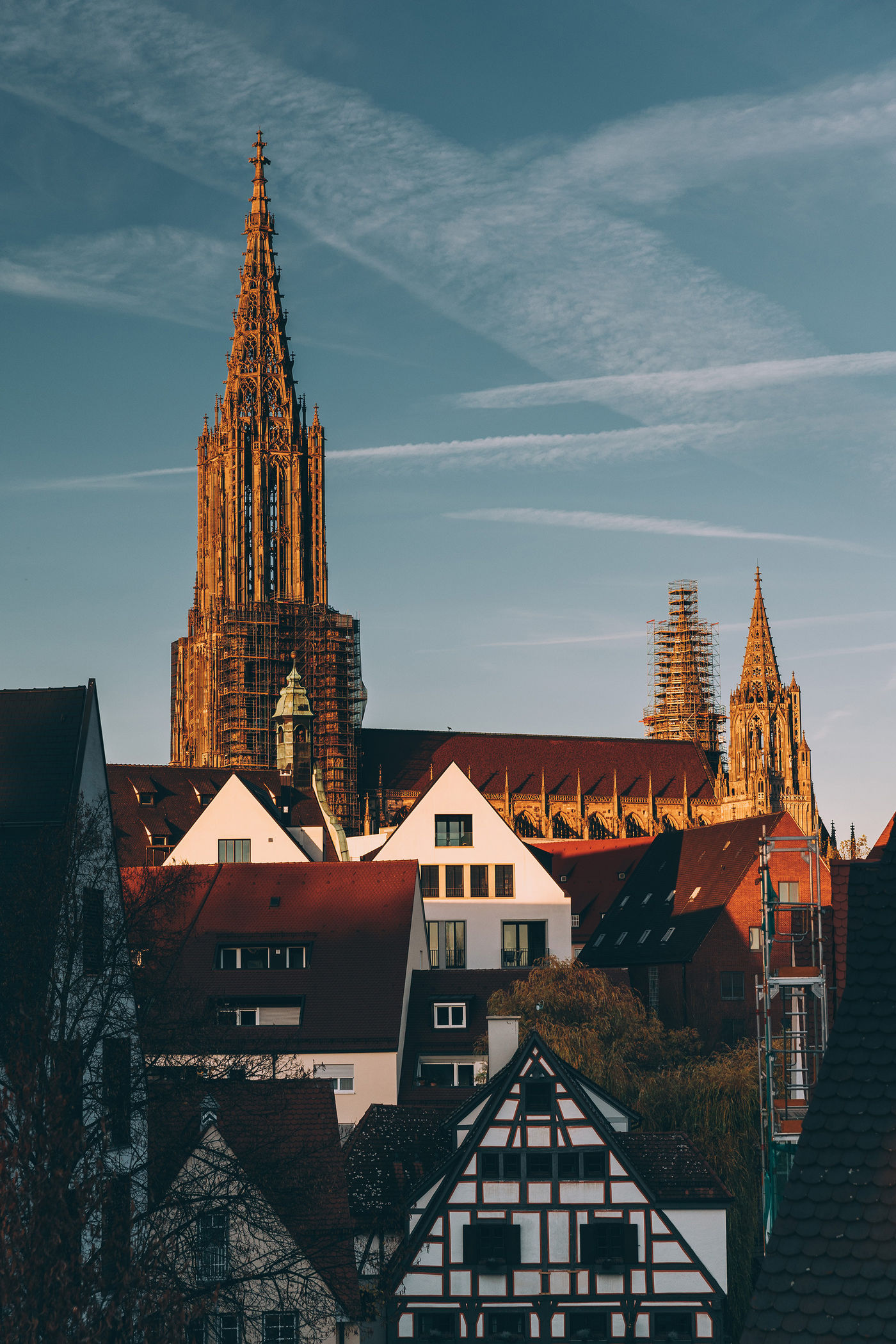
Ulm
Higher than everyone else
It rises like a gigantic Gothic cathedral (although strictly speaking it is a cathedral and not a cathedral). For this reason alone, the Ulm Cathedral is extremely impressive. But beyond that, it is enthroned as the tallest in the world with its church tower, which rises a proud 161 meters into the air!
For those who make the effort to climb the 102m to the second platform of the tower (top of the tower is currently not accessible), breathtaking views open up again and again along the way. Between the filigree Gothic windows and the gargoyles, there are magnificent panoramas of the city and the surrounding area. On clear days, the view even extends as far as the Alps. Personally, I think it's definitely worth the effort!
The people of Ulm began building their civic church in 1377, financed solely by themselves. After a temporary standstill in construction, the spire was added to the cathedral in 1890. And if you look in the direction of the roof ridge, you can see a copper Ulm sparrow at the top, the small unofficial landmark of the Danube city ...
Our tip: Free tower ascent with the UlmCard!

Düsseldorf
Breezy view over the Rhine metropolis
There is no better place to get an overview of Düsseldorf's geographical features than the Rhine Tower. Here, at a height of 172.5 meters, an impressive 360-degree panorama of the city opens up. From the Media Harbour to the Old Town, the Hofgarten, Königsallee and the Rhine with its family of bridges - everything is at your feet. In the Japanese restaurant Qomo in the tower, you can enjoy this view over sushi and miso soup while the restaurant rotates on its own axis in 72 minutes.

Chemnitz
Looking up
The landmark of the Sonnenberg district of Chemnitz with its double-helmeted tower not only stands out from afar: between typical old building architecture and socialist gap development, St. Mark's Church also stands out architecturally like no other building in the district.
The reddish-brown brick building also stands for the strong population growth of the city of Chemnitz and the Sonnenberg district in particular. As a result, a new parish was founded at the end of the 19th century and a new place of worship was built in the form of St. Mark's Church.

Cuxhaven
Where the Elbe ends...
...and the North Sea begins. In order to make this geographically important point visible, a fire used to burn in the Kugelbake at night and thus served as an orientation aid for sailors.
Today, the Kugelbake has lost its actual significance, as modern radar piloting has taken over its task. Nevertheless, the Kugelbake is still a popular destination for excursions, because it marks the northernmost point of Lower Saxony and is a protected monument.
Incidentally, the emigrants who used to set out from Cuxhaven on their sea journey to America often took the sight of the Kugelbake with them on their way as a last reminder of their homeland.

Stuttgart
Notre Dame of Stuttgart
St. John's Church at Feuersee - probably one of the most beautiful churches in Stuttgart. Some lovingly call it the "Notre Dame of Stuttgart".What the attentive observer immediately notices: the church tower is missing its spire. The tower and the church were heavily destroyed by bombing during the Second World War.The church without a spire is idyllically situated on an artificially created peninsula in the Feuersee. If you sit down on the boardwalk, you have a wonderful view - and with a little luck, even the inhabitants of the Feuersee will show themselves: the turtles, which like to sun themselves in the shore area at warm temperatures.

